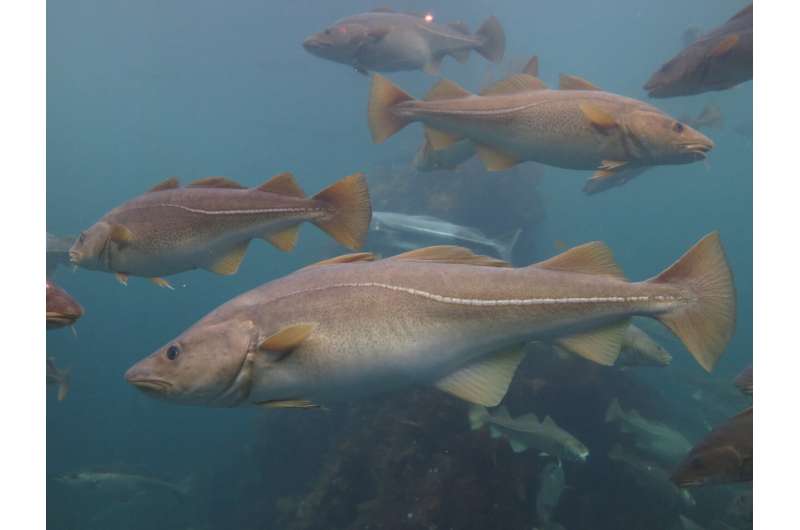New model helps predict climate change-induced early spawning in fish

Fisheries managers and researchers may now predict how early fish will spawn in response to warming waters due to climate change, both in the oceans and in freshwaters.
A new, simple model developed by researchers at the University of British Columbia and the Chinese Academy of Sciences, and applied to spring-spawning fish of temperate latitudes, allows predicting quite precisely shifts in the timing of maturation and spawning, given a change in mean annual temperature.
Built on a description of seasonal temperature changes represented by two sine curves, the model is based on the notion that a specific temperature threshold, when reached, is what triggers the hormonal cascade that 'tells' fish it is time to reproduce.
But when water temperature rises, this process goes off-balance as fish require more oxygen to survive. The problem is that their gills—which are 2D surfaces—cannot keep up with the oxygen demand of their 3D growing bodies and the new temperature-induced oxygen demand. This imbalance, thus, stresses fish and makes them mature and spawn earlier.
"When the annual mean temperature in a given area and period has increased, this leads to spring temperatures 'arriving' earlier. Our new model, which assumes the seasonal temperature oscillations that are observed in nature, requires as input only the difference in mean temperature between two periods, and that between summer and winter temperatures. With only these two numbers, the model predicts by how many days the spawning of fish is accelerated", said Dr. Daniel Pauly, principal investigator of the Sea Around Us initiative at UBC's Institute for the Oceans and Fisheries and lead author of the study published in Environmental Biology of Fishes.
"This simple model will hopefully replace the complex hypotheses often presented to explain temporal shift of spawning in terms of adaptation to similar shifts in the emergence of prey species, which only replace one mystery by another, but don't explain much, if anything," said Dr. Cui Liang, co-author of the study and a researcher at CAS' Institute of Oceanology.
More information: Pauly, D. et al. Temperature and the maturation of fish: a simple sine-wave model for predicting accelerated spring spawning. Environ Biol Fish (2022). doi.org/10.1007/s10641-022-01212-0
Provided by Sea Around Us

















